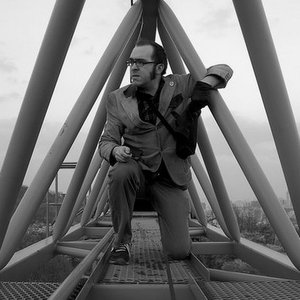 Notebook on Cities and Culture‘s Korea Tour is brought to you by Daniel Murphy, David Hayes, and The Polar Intertia Journal, an outlet for artists and researchers documenting the urban condition.
Notebook on Cities and Culture‘s Korea Tour is brought to you by Daniel Murphy, David Hayes, and The Polar Intertia Journal, an outlet for artists and researchers documenting the urban condition.
At a bar by the train tracks near Yongsan, Colin talks with Jon Dunbar, urban explorer, editor of long-running Korean punk zine Broke in Korea, and author of Daehanmindecline. They discuss the difference between a Korean abandoned place and a Canadian abandoned place; how Seoul got re-inhabited after the war; the development of poor “moon villages” on the hillsides; how he defines “urban exploring,” and why he dislikes that name; the urban renewal process that causes the abandonment of neighborhoods; the hired goons who harass people to leave areas slated for demolition; how big a city all the abandoned buildings he’s visited would constitute by themselves; his experience in the tunnel from The Host; what it means to explore Korea’s abandoned/disputed/places as a foreigner, and the difficulty of getting Koreans interested in urban exploration; the time he ran into a man collecting scrap metal, and why that man felt embarrassment for his country; the difference between the Korea he came to, which had both grass huts and high-rises, and Korea today; why so many buildings in Seoul have reached such an advanced state of decrepitude so quickly; what he prefers about North Korean architecture to South; what most high-rises in Seoul stand on the ruins of; his discovery of the Korean punk scene, and why he needed to confirm its existence before he came to live; the lower level of violence and higher level of musicianship in Korean punk; how he got to work for an organization like the Korean government; the ominousness of a presidential promise to promote “the happiness of the people”; the meaning of han, why the government now wants to eradicate the concept, and how pansori reggae expresses it; the change in Seoul mayors that brought about a change in major Seoul building projects; the significance of the new Dongdaemun Design Plaza and the politics involved in building it; how, rather than declining, Korea has “improved in every way” since he turned up; his life in Bukcheon hanok village, and how its old-style houses have become more coveted in recent years; whether Korea can shake the idea of “old = bad”; where in Korea he witnessed a funk brawl; and the way to “use your unfamiliarity as a tool” in a place like Korea.
Download the interview here as an MP3 or on iTunes.
Post a Comment